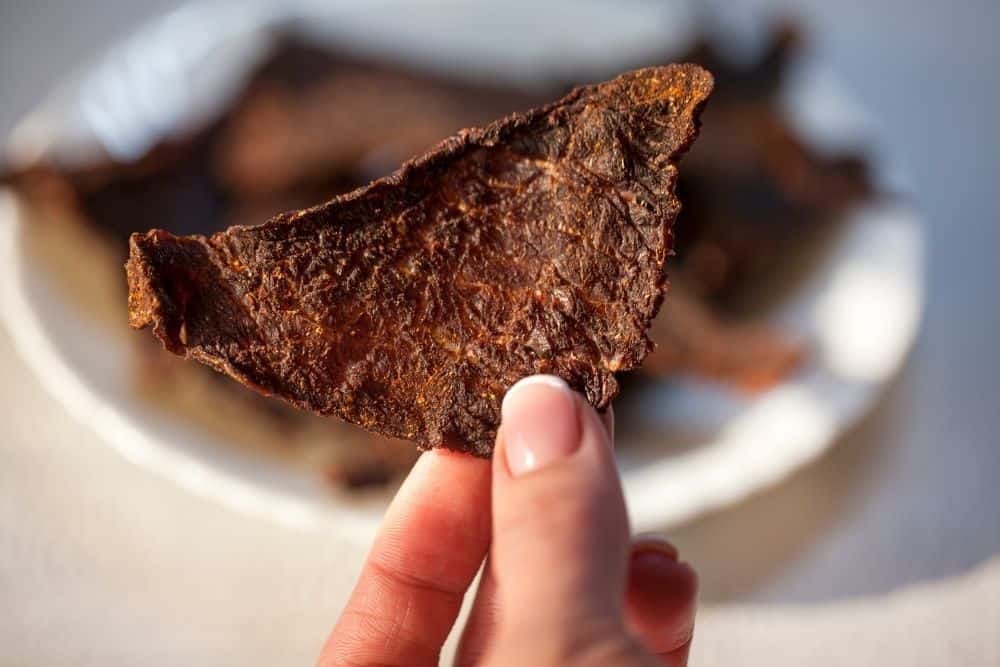Do you love snacking on jerky and pemmican? If so, you’re not alone. These two snacks are some of the most popular options out there. But a lot of people are unsure about the difference between pemmican and jerky.
In this blog post, we will explore the similarities and differences between these two snacks, as well as provide some tips on how to make your own pemmican!
What is pemmican, and where does it come from?
Pemmican is a type of jerky that originates from North America. It is made by drying meat and then grinding it into a paste. The paste is mixed with berries, nuts, or other ingredients and formed into bars or balls.
Pemmican can be stored for long periods of time without spoilage. The word “pemmican” comes from the Cree word pimîkân, which means “finely chopped meat.” The Cree people were the first to make pemmican over 200 years ago.
Today, pemmican is often used as a survival food because it is so durable and nutrient-rich. It contains high levels of protein, fat, and carbohydrates, as well as vitamins A, B12, and C.
What is jerky, and where does it come from?
Jerky is a dried and salted meat that has been cut into strips or cubes. It can be made from beef, elk, bison, deer, pork, turkey, salmon, or any other type of meat. The origins of jerky are unknown, but it is thought to have originated in Asia or Africa.
Jerky is popular in the United States and Canada and is often eaten as a snack or used as travel food. It is also sometimes used as an ingredient in recipes.
Jerky comes in many different flavors, including teriyaki, pepperoni, hot & spicy, and hickory smoked. It can be bought at convenience stores and supermarkets. There are also some brands of jerky that are available online.
How are pemmican and jerky made differently, and what are the benefits of each type of foodstuff?
Pemmican is made from lean meat that has been dried and pounded into a powder. Jerky, on the other hand, is made from whole pieces of meat that have been trimmed of fat and then seasoned with salt or spices before being dried.
The primary difference between pemmican and jerky is that pemmican contains rendered fat, while jerky does not. This renders pemmican a more complete source of nutrition than jerky, as it provides both protein and essential fatty acids.
Additionally, because it is shelf-stable due to its high sugar content, pemmican can be stored for long periods of time without going bad. Jerky, on the other hand, needs to be refrigerated in order to prevent spoilage.
Which one should you eat if you’re looking for a high-protein, low-carbohydrate snack on the go – pemmican or jerky?
Pemmican is made primarily of dried meat, fat, and berries. Jerky is made from beef, pork, turkey, lamb, or fish that has been trimmed of fat and cut into strips before being dried. So which one should you eat if you’re looking for a high-protein, low-carbohydrate snack on the go? Well, it depends on what you’re looking for.
Pemmican is higher in protein and lowers in carbohydrates than jerky. However, jerky tends to be more flavorful due to the addition of spices during the drying process. If you’re looking for a healthy snack that will give you sustained energy throughout the day, pemmican is probably your best bet.
But if you’re looking for something that’s going to satisfy your taste buds, jerky is the way to go. So is pemmican and jerky the same thing? No, they are not the same thing. Pemmican is made primarily of dried meat, fat, and berries, while jerky is made from beef, pork, turkey, lamb, or fish that has been trimmed of fat and cut into strips before being dried.
Jerky tends to be more flavorful due to the addition of spices during the drying process, while pemmican is higher in protein and lower in carbohydrates than jerky. However, both snacks are healthy options that will give you sustained energy throughout the day.
Pros and cons of making your own pemmican or jerky at home.
Making your own pemmican or jerky can be a fun, rewarding, and tasty way to prepare high-quality, protein-rich snacks. It can also be a great way to save money on store-bought snacks. However, there are also some potential drawbacks to making your own pemmican or jerky.
For instance, it can be time-consuming to make your own pemmican or jerky, and it can also be tricky to get the right mix of ingredients to create a truly flavorful and satisfying finished product. If you’re interested in making your own pemmican or jerky, there are many online recipes and tutorials to help you get started.
Just be sure to do your research so that you can avoid any potential pitfalls! And most importantly, have fun with it – after all, cooking is supposed to be enjoyable!
Recipes for making your own pemmican or jerky.
There are many recipes for making your own pemmican or jerky. Here are a few of them:
For Pemmican:
- 50% lean beef, cut into small pieces
- 25% rendered fat (bacon grease, lard, etc.)
- 25% dried fruits and berries (chopped)
Instructions:
- Preheat oven to 175 degrees F.
- In a large bowl, mix together the beef, fat, and fruit/berries.
- Spread mixture onto a baking sheet and bake for 45 minutes, stirring occasionally.
- Remove from oven and let cool completely before storing in an airtight container.
For Jerky:
- Lean beef, cut into thin strips
- Marinade of your choice (see recipes below)
Instructions:
- Preheat oven to 175 degrees F.
- Place beef strips in a single layer on baking sheets.
- Bake for 30 minutes, flipping once halfway through.
- Remove from oven and let cool completely before storing in an airtight container.
There are many different recipes for pemmican and jerky, but they all have the same basic ingredients: meat, fat, and dried fruit or berries. Pemmican is made with lean beef, while jerky can be made with any type of meat. Both pemmican and jerky are dried using low heat so that the moisture is removed, but pemmican is typically ground into a paste while jerky is chopped into strips.

